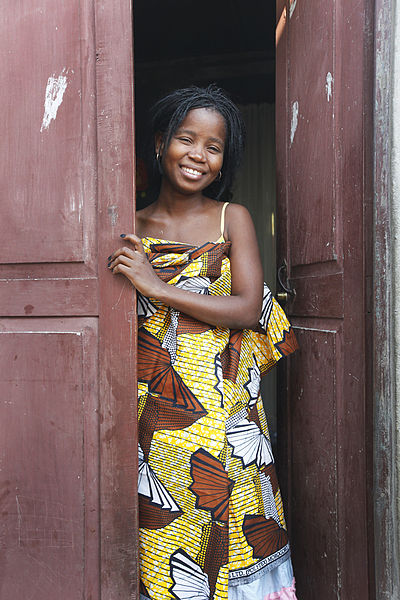 One of the most traditional and common pieces of clothing in Mozambique is a sarong-style garment called “capulana”. It’s popular both among men and women, but females wear it more often because it’s comfy, pretty, and multi-functional. A capulana became the local folk attire of Mozambique centuries ago when it replaced traditional animal skins. Since then, it hasn’t lost its popularity. Today, capulanas have a more contemporary design and color palettes, but they’re still a significant part of Mozambican cultural heritage.
One of the most traditional and common pieces of clothing in Mozambique is a sarong-style garment called “capulana”. It’s popular both among men and women, but females wear it more often because it’s comfy, pretty, and multi-functional. A capulana became the local folk attire of Mozambique centuries ago when it replaced traditional animal skins. Since then, it hasn’t lost its popularity. Today, capulanas have a more contemporary design and color palettes, but they’re still a significant part of Mozambican cultural heritage.
A capulana (kapulana, nguvu, or vemba) is a sarong-like garment often worn in Mozambique. It is also common in other regions of southeastern Africa. A capulana, basically, is a rectangular piece of fabric measuring approximately 2 meters by 1 meter (6.6 feet by 3.3 feet). Capulanas can be worn as a wrap-around skirt, a separate dress, or even used as a baby carrier on the back, making them versatile and functional. They are considered complete pieces of clothing in their own right.
The presence of capulanas in Mozambique dates back to the establishment of the Arab-Indian trade routes. Indian traders introduced capulanas as a form of currency in exchange for other goods. Initially, capulanas were available in three main colors: red, white, and black. White symbolized ancestral protection, black represented evil, and red symbolized the spirit of war. As time went on, Mozambicans began to favor capulanas over traditional animal skins. Early capulana designs often depicted elements from Africa's wildlife and environment, such as leopards, lions, suns, as well as patterns like “ndjiti” (a white & red geometric design), “xithango” (plaid pattern), and “ximangelani” (black & white spotted wild birds). These traditional styles remained popular until the arrival of Portuguese colonial rule. Nowadays, such early capulana styles are primarily associated with “tinyanga” (witch doctors, spirit healers, or “curandeiros”). Additionally, the “palu” style, characterized by small blue & white plaid patterns, was popular during the early years of the capulana.

Woman in Mozambican capulana. Photo from Wikipedia.org. Photographer Steve Evans
Today, capulanas come in a wide array of designs and colors. In Mozambique, they are often worn with a headscarf and a tailored blouse. Capulanas serve various purposes, from everyday casual wear to carrying heavy loads, and can even be carefully tailored for special events. The traditional colors and styles of capulanas from earlier times are highly sought after and expensive these days. In Mozambique, capulanas are highly valued and admired for their beauty. A lot of women wear this traditional garment in daily life and for special occasions.
Brightly colored capulanas are frequently given as gifts to women in Mozambique. Some couples even create matching capulana outfits for special occasions, like traditional marriages or various ceremonies.


